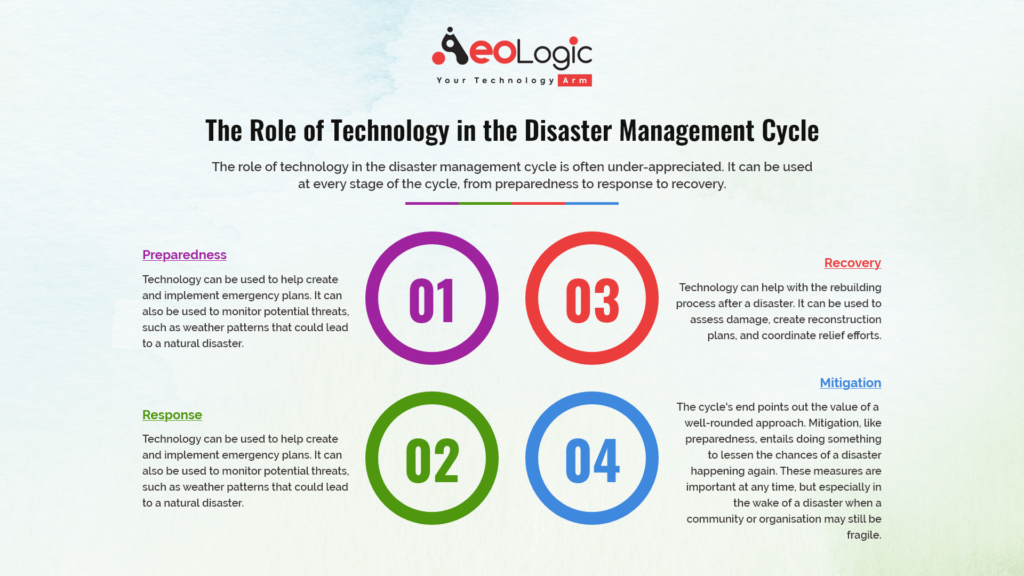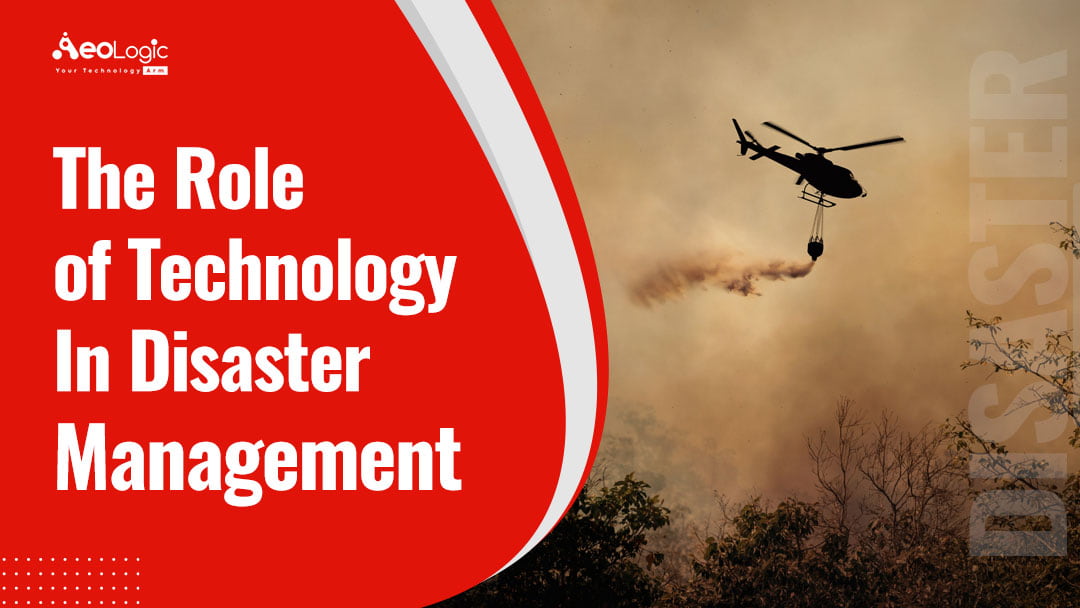There are many applications that help in the provision of aid in times of calamities. All these technological benefits have had a significant impact on the management and eradication of disasters. Today, I would like to share a topic that is close to my heart. A topic that is often neglected. The Role of Technology in Disaster Management.
So, without further ado, let’s delve straight into it!
Technology is an integral part of our daily lives. We hardly live without tapping into its benefits. This gave birth to the field of technological advancement, which has seen steady progress over a long period of time and is continuously developing to keep pace with the ever-evolving needs of the people. The digital era has witnessed immense technological developments and rapid growth in terms of applications and platforms that streamline our day-to-day schedules in many aspects of life.
Also Read: Automation is at the Heart of Digital Business Transformation
The Role of Technology in the Disaster Management Cycle

The role of technology in the disaster management cycle is often under-appreciated. It can be used at every stage of the cycle, from preparedness to response to recovery.
Preparedness: Technology can be used to help create and implement emergency plans. It can also be used to monitor potential threats, such as weather patterns that could lead to a natural disaster.
Response: In an emergency, technology can be used to coordinate and manage the response effort. It can also be used to provide information and assistance to those affected by the disaster.
Recovery: Technology can help with the rebuilding process after a disaster. It can be used to assess damage, create reconstruction plans, and coordinate relief efforts.
Mitigation: The cycle’s end points out the value of a well-rounded approach. Mitigation, like preparedness, entails doing something to lessen the chances of a disaster happening again. These measures are important at any time, but especially in the wake of a disaster when a community or organisation may still be fragile.
The Future of Disaster Management and What Role can Technology Play?
Disaster Management is a major concern for every country. In the past, there were no proper methods to manage disasters. However, with the advent of technology, we have been able to develop better techniques to manage disasters.
The role of technology in disaster management is a very important one. Technology can help us identify threats before they happen so that we can take measures to prevent them from becoming a reality. Technology also helps us communicate with each other easily during a crisis situation so that we can work together towards finding solutions for issues related to natural calamities such as earthquakes, hurricanes and floods etc.
The first thing to consider when looking at technology’s role in disaster management is whether or not it should be used at all. Some people believe that the use of technology will only make things worse because it creates more opportunities for failure or mistakes that could result in further harm to victims or even death. However, as with many things in life, there are also benefits associated with using technology during these events as well as potential pitfalls that need to be considered before implementation takes place.
Some examples include:
- Using drone technology to assess damage after an earthquake has occurred;
- Using GPS tracking systems on emergency vehicles to ensure that they do not become disoriented while responding to calls.
- The use of social media platforms like Twitter or Facebook where citizens can post pictures from their phones about what happened (e.g., where they’re located), how bad it is outside right now (“shelter-in-place” orders), etc.;
- Making sure everyone knows where shelters are located so people don’t have to wander around aimlessly
Also Read: Benefits of Mobile App for Your Retail Business
Technology can Detect Earthquakes and Deliver Quick Updates
Technology can help monitor earthquakes and provide rapid updates about changing conditions. Earthquakes can have a huge impact on structures, so it’s important to be ready with the right tools and equipment.
A hurricane has the potential to have a devastating impact on any community. Commercial buildings should be designed to withstand hurricanes, and you are encouraged to review material safety data sheets before covering your business with tarps.
Technology is Helpful in Disaster Management
A disaster can happen at any time. It could be a small fire, or it could be a huge earthquake. It can be destroys your home and everything you love. You never know when disaster is going to strike, but there are things you can do to help minimize the damage and make sure your family is safe.
Technology is an important part of disaster management. We’ve put together this guide to show you how technology can help monitor earthquakes and provide rapid updates about changing conditions. When an earthquake strikes, technology helps to provide information about where the epicenter was. So, this information can help emergency responders plan their response and get people out of harm’s way quickly.
Earthquakes have the potential to have a devastating impact on any community if they are severe enough. Technology can also help monitor for hurricanes and provide rapid updates about changing conditions in those areas as well—helping residents prepare for what may come their way during an emergency situation like this one!
Also Read: The Importance of CRM in the Retail Sector
Conclusion
Well, it’s clear that technology has a big role in disaster management. From alert systems to drones, the world is quickly changing the way we respond to disasters, and for many of us, this will be the first time we’ve ever known this kind of technology. But that shouldn’t make it any less of a game-changer. This is our chance to develop new ways to help prevent disasters and minimize their impact wherever possible. Hopefully, someday soon we’ll be able to completely prevent these kinds of disasters. But until then let’s do what we can with this new technology.
Feel free to schedule a free 60-minute consultation with one of our experts. We’ll talk about the opportunities and address any concerns you may have. Our consultants will suggest solutions and outline how they can be implemented. Let’s talk!











